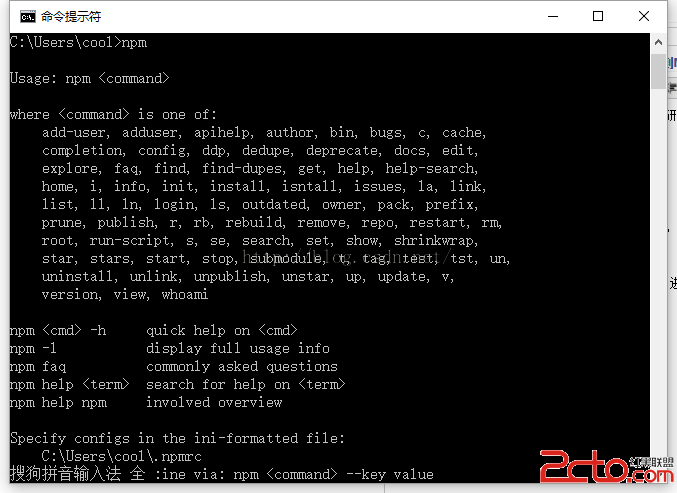編輯:關於android開發
大家在使用APP的時候,有的APP在點擊語音搜索界面後,會出現一個小話筒,小話筒會類似雷達似得在閃爍,表示正在傾聽你說話的內容(這個大家可以參照微軟的必應APP),那麼問題來了,這種動畫效果是如何實現的呢?其實實現這種動畫效果有很多種方法,最常見的是兩種:第一種就是插入n張圖片進行切換已達到如此目的,第二種就是通過改變一張圖片的透明度來達到閃爍的效果。下面就分別講一下通過這兩種方法如何實現。
第一種:通過n張圖片之間切換實現動畫效果
這種方法的原理很簡單,利用handler的延時機制在子線程中完成圖片切換,再在主線程展示。
1、首先我們要先寫一個線程池,在使用的時候方便調用。
1 package com.jereh.musicapplication.threadpool;
2
3 import java.util.concurrent.ExecutorService;
4 import java.util.concurrent.Executors;
5 import java.util.concurrent.ScheduledExecutorService;
6
7 /**
8 * Created by zhangdi on 2016/9/1.
9 * 這是一個線程池的工具類,在用到線程的時候可以直接類名加方法名使用
10 */
11 public class ThreadPoolManager {
12 /** 線程執行器 **/
13 private static ExecutorService executorService = null;
14 /** 固定5個線程 **/
15 private static int nThreads = 5;
16 /** 單例 **/
17 private static ThreadPoolManager taskExecutorPool = null;
18
19
20
21 /** 初始化線程池 **/
22 static {
23 taskExecutorPool = new ThreadPoolManager(nThreads * getNumCores());
24 }
25
26 /** 構造函數 **/
27 private ThreadPoolManager(int threads) {
28 //executorService = Executors.newFixedThreadPool(threads);
29 executorService = Executors.newScheduledThreadPool(threads);
30 }
31
32 /**
33 * 取得單例
34 *
35 * @return
36 */
37 public static ThreadPoolManager getInstance() {
38 return taskExecutorPool;
39 }
40
41 /**
42 * 取得線程執行器
43 *
44 * @return
45 */
46 public ExecutorService getExecutorService() {
47 return executorService;
48 }
49
50 /**
51 * 取得周期性線程執行器
52 * @return
53 */
54 public ScheduledExecutorService getScheduledExcutorService(){
55 return (ScheduledExecutorService)executorService;
56 }
57
58 /**
59 * 獲得手機cup個數
60 * @return
61 */
62 public static int getNumCores() {
63 int threadCount = Runtime.getRuntime().availableProcessors();
64 return threadCount;
65 }
66
67 }
2、下一步就是在xml文件中插入一個布局
1 <FrameLayout 2 android:layout_width="match_parent" 3 android:layout_height="match_parent" 4 android:id="@+id/fl"/>
3、然後就是在java代碼中編輯切換圖片了:
1 package com.jereh.musicapplication;
2
3 import android.graphics.drawable.Drawable;
4 import android.os.Message;
5 import android.support.v7.app.AppCompatActivity;
6 import android.os.Bundle;
7 import android.widget.FrameLayout;
8
9 import com.jereh.musicapplication.threadpool.ThreadPoolManager;
10
11 import java.util.Timer;
12 import java.util.TimerTask;
13 import java.util.concurrent.TimeUnit;
14
15 public class FrameActivity extends AppCompatActivity {
16
17 private Timer timer;
18 FrameLayout frameLayout;
19 Drawable drawable;
20 android.os.Handler handler = new android.os.Handler(){
21 int i = 0;
22 @Override
23 public void handleMessage(Message msg) {
24 if (msg.what==1){
25 i++;
26 move(i%4);
27 }
28 super.handleMessage(msg);
29 }
30 };
31 void move(int i){
32 drawable = getResources().getDrawable(R.mipmap.ic_launcher,null);
33 Drawable drawable1 = getResources().getDrawable(R.mipmap.dd1,null);
34 Drawable drawable2 = getResources().getDrawable(R.mipmap.dd2,null);
35 Drawable drawable3 = getResources().getDrawable(R.mipmap.dd3,null);
36 switch (i){
37 case 0:
38 frameLayout.setForeground(drawable);
39 break;
40 case 1:
41 frameLayout.setForeground(drawable1);
42 break;
43 case 2:
44 frameLayout.setForeground(drawable2);
45 break;
46 case 3:
47 frameLayout.setForeground(drawable3);
48 break;
49 }
50 }
51 @Override
52 protected void onCreate(Bundle savedInstanceState) {
53 super.onCreate(savedInstanceState);
54 setContentView(R.layout.activity_frame);
55 frameLayout = (FrameLayout)findViewById(R.id.fl);
56 timer = new Timer();
57 // timer.schedule(new TimerTask() {
58 // @Override
59 // public void run() {
60 // handler.sendEmptyMessage(1);
61 // }
62 // },0,500);//第二個參數是隔多少秒之後開始顯示,第三個是隔多久顯示下一個
63
64 ThreadPoolManager
65 .getInstance()
66 .getScheduledExcutorService()
67 .scheduleAtFixedRate(new Runnable() {
68 @Override
69 public void run() {
70 handler.sendEmptyMessage(1);
71 }
72 },0,500, TimeUnit.MILLISECONDS);//第二個參數是隔多少秒之後開始顯示,第三個是隔多久顯示下一個
73 }
74
75
76 @Override
77 protected void onDestroy() {
78 timer.cancel();
79 super.onDestroy();
80
81 }
82 }
這裡我寫了兩種方式,第一種是用Timer類來實現,後來發現使用自定義的線程池更好,大家如果不想在定義一個線程池的話,可以直接使用Timer類來實現同樣的效果,至此使用第一種級n張圖片切換實現動畫效果的代碼就完成了。這種方式有一個弊端就是得需要n張圖片,那麼要是只有單張圖片又該怎麼辦呢,那麼就可以使用下面這種方法了。
第二種:通過改變圖片透明度實現動畫效果
1、首先我們先封裝兩個動畫方法,第一個是從不透明到完全透明,第二個是完全透明到不透明
1 /**
2 * 透明效果
3 * @return
4 */
5 public Animation getAlphaAnimationIn() {
6 //實例化 AlphaAnimation 主要是改變透明度
7 //透明度 從 1-不透明 0-完全透明
8 Animation animation = new AlphaAnimation(1.0f, 0);
9 //設置動畫插值器 被用來修飾動畫效果,定義動畫的變化率
10 animation.setInterpolator(new DecelerateInterpolator());
11 //設置動畫執行時間
12 animation.setDuration(2000);
13 return animation;
14 }
15 public Animation getAlphaAnimationOut() {
16 //實例化 AlphaAnimation 主要是改變透明度
17 //透明度 從 1-不透明 0-完全透明
18 Animation animation = new AlphaAnimation(0, 1.0f);
19 //設置動畫插值器 被用來修飾動畫效果,定義動畫的變化率
20 animation.setInterpolator(new DecelerateInterpolator());
21 //設置動畫執行時間
22 animation.setDuration(2000);
23 return animation;
24 }
2、分別給這兩個方法設置監聽,即第一個動畫完成立刻執行第二個動畫,第二個動畫完成在立刻執行第一個動畫以實現動畫循環播放的效果
1 voiceState1.setAnimation(animationIn);
2 voiceState1.setAnimation(animationOut);
3 /**
4 * 監聽動畫實現動畫間的切換
5 */
6 animationOut.setAnimationListener(new Animation.AnimationListener() {
7 @Override
8 public void onAnimationStart(Animation animation) {
9
10 }
11
12 @Override
13 public void onAnimationEnd(Animation animation) {
14 voiceState1.startAnimation(animationIn);
15 }
16
17 @Override
18 public void onAnimationRepeat(Animation animation) {
19
20 }
21 });
22 animationIn.setAnimationListener(new Animation.AnimationListener() {
23 @Override
24 public void onAnimationStart(Animation animation) {
25
26 }
27
28 @Override
29 public void onAnimationEnd(Animation animation) {
30 voiceState1.startAnimation(animationOut);
31 }
32
33 @Override
34 public void onAnimationRepeat(Animation animation) {
35
36 }
37 });
至此使用一張圖片通過改變其透明度實現閃爍效果就完成了。
這兩種方法在實現動畫閃爍效果方面都很實用,希望能給大家的學習有所幫助,如果您感覺這篇文章還不錯,就給推薦一下吧,若是哪個地方感覺筆者寫的不好,也希望大家能夠評論指正,謝謝!
 hellocharts-android開源圖表庫(一)線狀圖,hellocharts
hellocharts-android開源圖表庫(一)線狀圖,hellocharts
hellocharts-android開源圖表庫(一)線狀圖,hellocharts1.效果圖 2.源代碼 MainActivity.java public clas
 Android 文件訪問權限的四種模式,android四種
Android 文件訪問權限的四種模式,android四種
Android 文件訪問權限的四種模式,android四種Linux文件的訪問權限* 在Android中,每一個應用是一個獨立的用戶* drwxrwxrwx* 第1位:d
 Android 側滑菜單的實現
Android 側滑菜單的實現
Android 側滑菜單的實現 Android 側滑菜單的實現,參考網上的代碼,實現側滑菜單。最重要的是這個動畫類UgcAnimations,如何使用動畫類來側滑的封裝F
 cordova開發自定義插件
cordova開發自定義插件
cordova開發自定義插件 由於最近工作需要,需要一個自定義插件,本人研究了很久終於做出一個最簡單的插件,是基於android平台來開發的,雖然寫博客很花時間,但是